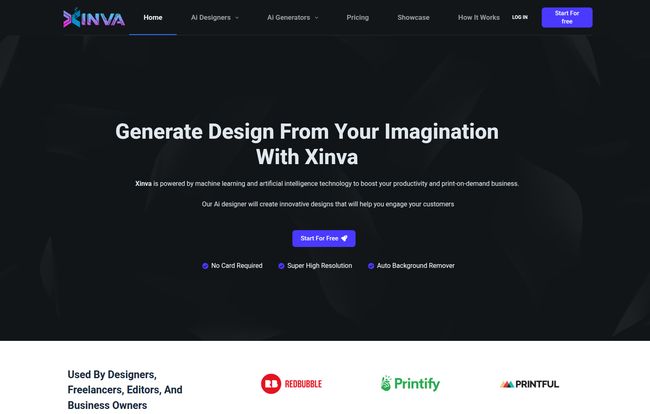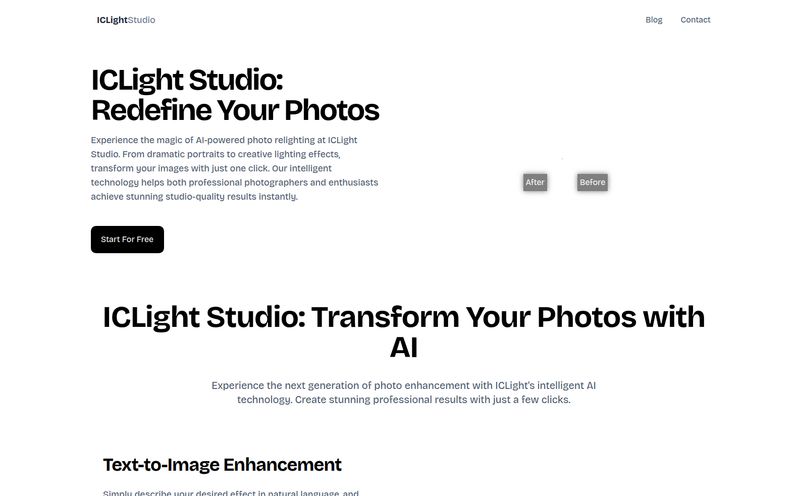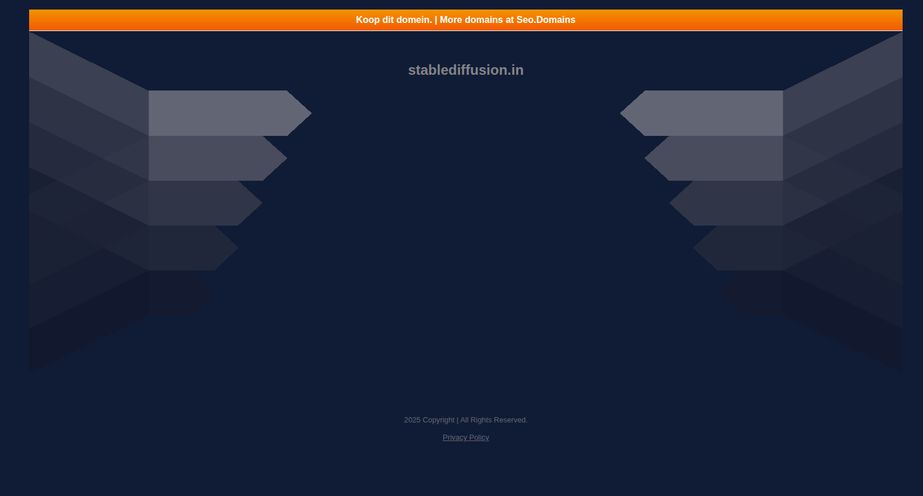If you've been in the SEO, marketing, or e-commerce game for more than five minutes, you know the content hamster wheel never stops spinning. But it’s not just blog posts and keywords. It’s visuals. It’s social media graphics. And for a huge chunk of us, it’s print-on-demand (POD) products. T-shirts, stickers, mugs… you name it.
I can’t count the number of times a client or I have had a brilliant idea for a t-shirt, only to be stopped dead by the design process. Either you spend hours fumbling in Canva trying to make something that doesn't look like a 1998 PowerPoint slide, or you drop a few hundred bucks on a designer and wait a week. Both can kill momentum. So, when another AI tool promising to solve all my problems slid across my screen, my default reaction was a healthy, seasoned eye-roll. But I gave it a shot. The tool is called Xinva AI, and... well, I’m actually a little impressed.
So, What is Xinva AI, Really?
At its core, Xinva is an AI image generator, but it’s not trying to be everything to everyone. It’s not out here trying to create photorealistic portraits of historical figures riding unicorns (though it probably could). Instead, Xinva has found its lane, and it’s a lane I spend a lot of time in: commercial design for print-on-demand businesses.

Visit Xinva AI
Think of it as an AI that’s been specifically trained to create things you’d actually want to sell. It has dedicated generators for:
- AI T-Shirt Designs
- AI Sticker Designs
- AI Pattern Designs
- AI Furry Art (yes, really)
- AI Tattoo Designs
This focus is what sets it apart. It understands the context. It’s built for people who use platforms like Printful, Redbubble, and Printify, and it’s designed to pump out designs that work in that world. Instantly. It’s pretty wild.
The Art of the Prompt: Talking to the Machine
Here’s the thing with any AI art tool: it’s not magic. The quality of what you get out is directly tied to the quality of what you put in. Garbage in, garbage out. Xinva is no different. You can’t just type “cool cat” and expect a masterpiece that’ll sell a thousand shirts.
Mastering the prompt is the real skill here. It's less like a vending machine where you press B4 and get a Snickers, and more like a jukebox. You have to know what song to request. Xinva’s own site gives a great example of this. A “bad” prompt is just a few words. A “good” prompt adds more detail about style, color, and composition.
A master of a kitsch modernist, fantasy inspired stained sheet art style, minimalistic patterns, ancient fantasy stylized graffiti, distinctive street technique, popsurrealism detailed elements, golden background, contrast clean lines, sticker design, vector
That’s one of their “good” examples. See the difference? You’re not just asking for a thing; you’re giving the AI artistic direction. You're the director, it's the actor. Thankfully, Xinva seems to know this is a learning curve for most people and includes a Prompt Idea Generator and a weekly newsletter with ideas, which is a nice touch. You’re not just left floating in the dark.
The Good, The Bad, and The... AI? A Candid Look
No tool is perfect, right? After playing around with it, here's my honest breakdown of where Xinva shines and where it, well, requires a bit of patience.
The Big Wins for Creatives and Sellers
First off, the speed and cost-saving is just undeniable. The ability to generate a dozen unique design concepts in under five minutes is a game-changer. Think about the creative brainstorming alone. Instead of trying to describe your vision to a designer, you can generate a visual starting point. That alone is worth its weight in gold.
Then there are the practical, money-making features. Commercial use is included even on the free plan. This is huge. You don't have to worry about licensing headaches. The designs you make are yours to sell. Another feature I genuinely love is the Auto Background Remover. Anyone who’s ever spent 20 frustrating minutes trying to perfectly select a transparent background in Photoshop knows how amazing a one-click solution is. Plus, the designs come out in high resolution, so they're ready for print.
A Few Things to Keep in Mind
Now for the reality check. As I mentioned, your results will vary wildly based on your prompt. Expect to do some experimenting. Your first few designs might be a little… weird. That's part of the process. It's a creative dance, not a simple button press. You have to learn its quirks.
Another thing I noticed in their pricing is the distinction between Version 1 and Version 2 credits. The newer, presumably better, AI model (V2) costs more credits to use than the older one. This is pretty common in the AI space, but it’s something to be aware of when you're burning through your credit pack. You have to make a conscious choice about which engine you want to use for your project.
Let's Talk Money: Xinva's Pricing Breakdown
This is where I think Xinva really has an edge on some of its competitors. They offer a mix of subscription and credit-pack models, which I appreciate. Not everyone needs an unlimited monthly plan.
Here’s a simplified look at their plans:
| Plan | Price | Key Feature |
|---|---|---|
| Free | $0 / month | 5 Credits per month to test the waters. |
| Xinva Pro | $29 (one-time) | 250 V2 Credits, No Expiry. |
| Xinva Pro+ | $55 (one-time) | 500 V2 Credits, No Expiry. |
| Monthly | $39 / month | Unlimited V1 Credits + 500 V2 Credits. |
| Yearly | $239 / year | Unlimited V1 Credits + 6500 V2 Credits. |
Can we just talk about the non-expiring credits for a second? For someone who might only need a batch of designs one month and then none the next, this is fantastic. You buy a pack and use it at your own pace. This is so much better than the use-it-or-lose-it subscription anxiety that many other services create. The free plan is also genuinely useful for getting a feel for the tool before you commit any cash.
Who Is This Actually For?
After all this, who should be clicking that 'Start for Free' button?
- The Print-on-Demand Hustler: This is your tool. If you're running a store on Etsy, Redbubble, or through Printify, Xinva was basically built for you. It speeds up your entire workflow.
- The Small Business Owner: Need a quick graphic for a social media post? A simple illustration for your website? This is way faster and cheaper than hiring a designer for small, quick jobs.
- The Creative Hobbyist: If you just love making cool stuff and want to experiment with AI art without a steep learning curve or a hefty subscription, the free plan and the non-expiring credit packs are perfect.
It’s not necessarily for the high-end graphic designer who needs pixel-perfect vector control, but for the 90% of us who just need a great-looking design now, it's a powerful ally.
My Final Verdict: Is Xinva a Keeper?
Yeah, I think so. Look, AI isn't going to magically make you a creative genius. It's a tool. A really, really powerful one, but still a tool. Xinva AI understands this. It’s not over-promising the world. It’s offering a focused, practical solution to a very common problem for a very specific audience.
It makes the process of creating commercially viable designs faster, cheaper, and more accessible. The thoughtful pricing model, especially the non-expiring credits, shows they actually understand their target user. In my experience, tools that solve a real, nagging problem without locking you into a painful subscription you dont need are the ones that stick around. I've cleared a spot for Xinva in my digital toolbox.
Frequently Asked Questions
Can I really use Xinva designs for commercial purposes?
Yes, absolutely. According to their site, commercial use is included in all plans, even the free one. This means you can sell the designs you create on t-shirts, mugs, stickers, or other products without worrying about licensing issues.
What's the difference between Version 1 and Version 2?
While not explicitly detailed, V2 is almost certainly a newer, more advanced AI model. It likely produces higher-quality, more coherent, or more detailed designs. This is why it costs more credits to use than the V1 model, which is available for unlimited use on subscription plans.
Is Xinva AI hard to learn?
The interface itself is very simple. If you can type, you can use it. The real skill is in learning how to write effective prompts to get the exact results you want. This takes some practice and experimentation, but their prompt idea generator helps a lot.
Do the credits I buy ever expire?
This is a major plus for Xinva. The credits you purchase in the Xinva Pro and Pro+ one-time packs do not expire. You can buy them and use them whenever you need them. The credits that come with the monthly/yearly subscriptions, however, will reset with each billing cycle.
Is there a free trial for Xinva AI?
Yes, there's a permanent free plan. It gives you 5 credits every month to try out the platform. It's a great way to see if it fits your workflow before spending any money.
What kind of designs work best on Xinva?
It excels at illustrative and graphic-based designs perfect for merchandise. Think bold t-shirt graphics, intricate sticker designs, and unique patterns. It's particularly strong in styles like vintage, cartoon, graffiti, and fantasy art.
Reference and Sources
- Xinva AI Official Website
- Xinva AI Pricing Page
- Printful - A popular print-on-demand platform often used with AI-generated designs.



